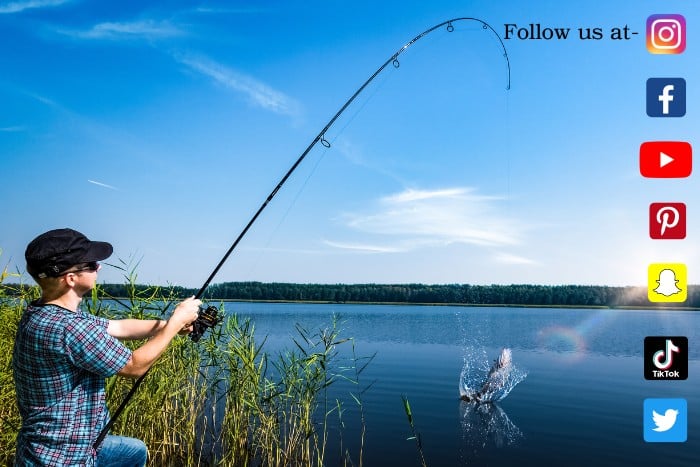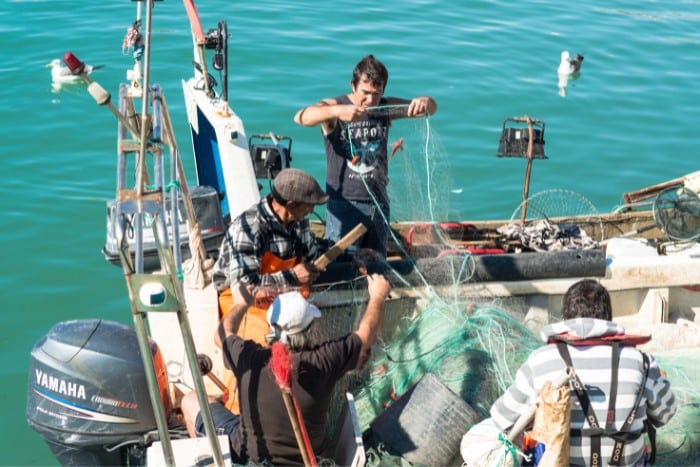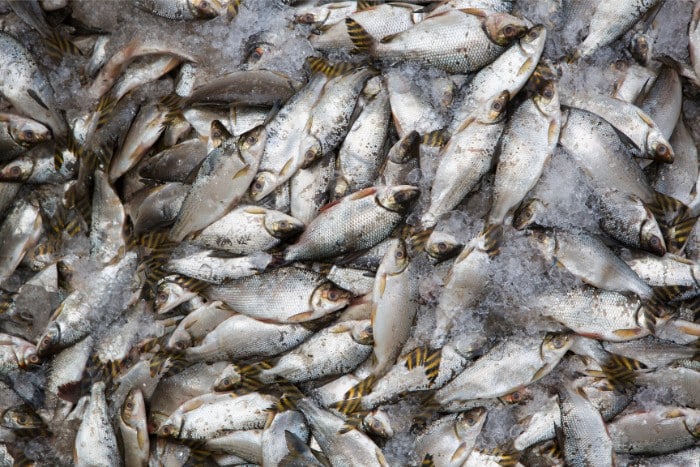Across the world, fishing means something different to everyone. For some, it’s a means of survival; for many others, it’s a chance to leave their “real life” problems behind and test their skills and abilities. Wherever fishing occurs and whatever the purpose, money is almost always involved.
Governments and local businesses benefit economically from fishing. Billions of dollars a year are spent and made thanks to commercial and recreational fishing. The industry can create jobs and bring tourists from all over to areas of the world that otherwise wouldn’t get much traction.
In 2019, the United States alone had 1.8 million people employed in the fishing industry, and $225 billion in fishing sales occurred. According to Fisheries Economics of the United States, $117 billion of value was added to the economy overall.
Money Made in Recreational Fishing
Recreational fishing is also known as sport fishing.
Recreational fishing can include everything from a group of friends going on a fly fishing trip to a professional angler fishing a tournament for hundreds of thousands of dollars.
1. Fishing Trips
Another way recreational fishing can generate revenue is through fishing trips. According to Sportfishing in America, just American citizens spent nearly $23 billion on trips throughout the year.
Non-citizens spend around $6 billion on fishing trips. A fishing trip requires travel, lodging, food, gear, licenses, and any money spent on hiring guides or going through a professional service.
These trips can cost people anywhere from a few hundred to several thousand dollars depending on the length and intensity of the trip.
Local companies and business owners are the ones who greatly profit from these trips.
Anglers stop by local bait and tackle shops and grab all the gear they need for a few days on the water, not to mention the food and lodging the out-of-towners require.
There’s also the possibility of hiring guides and boat rentals, which are other means of supporting the local economy.
Besides the travel expenses, many other purchases on fishing trips directly impact fishing companies.
Plus, with the use of social media by many of these companies, there is attention brought to a variety of unique fishing trips worldwide.
Where companies and fishing lodges may have run into challenges marketing their trips to people before social media, this is no longer a challenge.

2. Fishing License Sales
Before any person over the age of around 16 can fish, they’re going to need some sort of fishing license.
Countries worldwide have different license prices and requirements, but they all generate revenue for their local governments. Anglers can purchase day licenses, multi-day licenses, and annual licenses.
On top of the general license, there are things like trout stamps, protected water fees, and a variety of other things that cost money for anglers.
According to Sportfishing in America, in 2019, anglers had 41.4 million licenses purchased, which was the highest number in almost twenty years.
In 2021, 39 million fishing licenses were sold across the United States, showing that the pandemic did not significantly affect license sales.
Areas with prime fishing waters can make quite a bit of money, especially from tourists who want to fish for a few days.
The local governments then take that money and pour some of it back into preserving the lakes, rivers, and oceans we fish.
In the United States, however, it’s a requirement that all of the money made on license sales must go back into conservation.
This rule isn’t required in all countries, but in the United States, state and local governments must put their money where their mouth is and continue sustaining the habitats that many anglers cherish.
According to multiple sources, license sales in the United States generate upwards of $1 billion yearly.
Even though some anglers are frustrated with the money that they have to spend to be able to fish for a few days, it does go to a good cause.
Keeping our waters healthy will continue to make people, besides the government, money.
3. Professional Fishing Circuit
The professional fishing circuit is something that’s been taken to new levels in recent years.
Through the development of social media and the boom in participants due to the global pandemic, professional fishing has seen more people interested in the sport.
With larger viewing numbers, sponsors are willing to pour significant money into it.
For example, the Outdoor Channel and the Professional Bass Tours Anglers’ Association developed Major League Fishing in 2011, and in the past two years, purses have grown extensively.
For winning one tournament, anglers can secure anywhere from $100,000 to $250,000, according to Major League Fishing.
Add in the sponsorship dollars, and anglers can secure upwards of $1 million per year if they are successful enough.
Television deals can generate money and be a significant source of revenue as well. Contracts with large cable networks secure even more money for the world of fishing.
On top of the massive purses and corporate dollars, these fishing tournaments bring in quite a bit of money for local towns and businesses.
Small towns in states across the country can gain quite a bit of business throughout the week of the tournament.
There are numerous other professional fishing circuits all over the world that generate income.
Saltwater tournaments, fly fishing tournaments, and even bow fishing tournaments can be profitable for local conservation groups and businesses.
The trickle-down effect of the revenue can go a long way in generating revenue.
4. Gear Sales
According to Sportfishing in America, people spend around $51 billion on equipment, licenses, trips, and other fishing-related gear. Anglers spend approximately $8 billion of that on fishing gear.
Rods, reels, and components are the primary money-makers for companies all over the world. Anglers spent $2.5 billion alone on them.
Bait and fishing electronics are the 2nd most lucrative pieces of fishing equipment. In 2021 sport fishermen spent around $1.1 billion on them.
Things like bass boats, canoes, boat trailers, and other fishing equipment also add billions of dollars to the economy.
In 2021 alone, nearly $14 billion were spent on these things, while another $2 billion was spent on bass boats.
Many anglers find themselves adding to their arsenal of gear as often as they can before, during, and after the fishing season.
There are always things that can add to our experience on the water, and it’s definitely a guilty pleasure for some of the die-hard anglers to add to their overall arsenal.
5. Fishing and Social Media
Instagram, Facebook, and YouTube play a massive role in generating money for the world of fishing.
Fishing influencers like the Googan Squad, BlacktipH, and others have brought millions of eyes to the world of fishing over the past few years. They’ve begun to reinvent the world of the outdoors.
What was once an industry that was shown on The Outdoor Channel and various other networks is now found on all of the most popular social media websites with one click of a button.
Companies are starting to see the influence and beginning to give these people massive amounts of money to promote their products.
Marketing in the world of fishing no longer has to be the cliche commercials that are only shown in minimal areas.
Casual viewers of fishing are starting to hear the names of these companies that have been around for years.
Companies and individuals alike are pouring millions of dollars into the fishing industry, thanks to the development of social media and the popularity of many influencers.
The economic impact of this sect of the fishing world has yet to be tracked.
However, when the fishing industry gets 100s of millions of views each year on social media, overall angler numbers continue to grow.

6. Jobs
According to Sportfishing in America, there are over 820,000 people employed within the fishing industry, which can be anything from a professional guide to a person working behind the counter at a local bait shop.
Men and women all over the country depend entirely on the fishing industry to put food on their tables each night.
These 820,000 people had around $40 billion paid to them in income. That averages out to approximately $47,000 per person.
Obviously, certain employees in the world of fishing are getting paid far more than others, but it’s a sizable chunk of money for nearly 1 million people.
These numbers are only growing due to the recent uptick in anglers joining the sport.
Money Made in Commercial Fishing
The recreational fishing world has its economic benefits, and so does commercial fishing.
The definition of commercial fishing is, in the simplest terms, catching fish and other sorts of seafood for commercial profit.
This type of fishing can be done from a small fishing boat or a large crabbing boat. People all over the world dedicate their entire lives to commercial fishing.
1. Jobs
Recreational fishing supported just under 1 million jobs in 2021, and commercial fishing supported over 1.2 million jobs across the United States.
Included in these statistics were jobs like harvesters, processors, dealers, wholesalers, and retailers. As of 2019, there were 164,000 commercial harvesters, 250,000 importers, and 637,000 people working in retail.
Several hundred thousand other jobs were spread across various fishing industries in the United States.
In Europe, the commercial fishing world employs just over 160,000 people, so it’s not just an operation that’s profitable in the United States.

2. Fish Sales
The fish that commercial anglers catch are then sold all over the world. In 2019, hundreds of millions of dollars were made when anglers sold their harvests.
According to Fisheries Economics of the United States, Alaskan salmon generated nearly $674 million.
Scallops caught in the United States alone generated somewhere around $50 million, according to Fisheries Economics of the United States.
Commercial wholesalers sell these goods to restaurants and grocery stores, which adds another several hundred million dollars to the economy.
Restaurants and grocery stores, in turn, can sell the seafood to customers. These sales help pay the salaries of millions of restaurant and grocery store employees across the country.
3. Gear Sales
While recreational gear sales are significant, sales from the commercial fishing industry make even more money.
The $51 billion on sales across the country for recreation pale to the nearly $75 billion spent each year on equipment, boats, and other necessities to keep a full-time commercial fishing operation in full swing throughout the year.
4. Commercial Fishing License Sales
Commercial fishing licenses are far more expensive than recreational fishing licenses. As a result, state governments can generate quite a bit of money on each sale they make.
For example, an individual commercial fishing license in California costs a resident over $150. Non-residents are charged nearly $500.
Plus, there are a variety of fees that are associated with the sale of commercial fishing licenses.
There are boat registration fees in California that are somewhere between $400 and $1,200, depending on where you’re fishing and whether or not you’re a resident.
As soon as all the annual California licenses and fees are paid, yearly fees must also be paid before you choose to harvest any species.
These fees range anywhere from $50 per year to $15,000 depending on the species of fish you’re taking and the type of fishing method you’re using to harvest them.
Different states require different fees and have a variety of other rules and regulations, but all are relatively expensive and strict.
Commercial fishing is regulated just as heavily as farming across the United States, so those who choose to do it are often hit with many fees to ensure they’re following the rules and protecting the seafood populations.
All of the fees and registration provide profits for the state governments. As mentioned earlier, most of this money is required to be put back into the conservation of fish populations.
5. Danger of Overfishing
According to a 2011 report done by Ecotrust, overfishing cost over $15 million in the southeast United States. Nearly $150 million was lost as a result of overfishing in New England.
Commercial anglers who fail to follow the rules and regulations cost themselves and a variety of other businesses quite a bit of money due to fishing too heavily for specific species of fish and greatly damaging their populations in the process.
Over the years, this number has continued to increase. A variety of factors play into overfishing across the United States.
Still, it continues to cost commercial anglers and the other involved businesses quite a bit of money each and every year.

Conclusion
Fishing is a living and breathing industry that’s continually evolving. The traditional methods of money-making in the industry are no longer the only options.
Gear sales and fishing trips are seeing an influx of sales thanks to the introduction of social media to fishing.
People are hitting the water now more than ever, and the outdoor industry is thankful for the new influx of participants.
It’s a massive piece of the Gross Domestic Product in the United States and many other countries all across the world.
